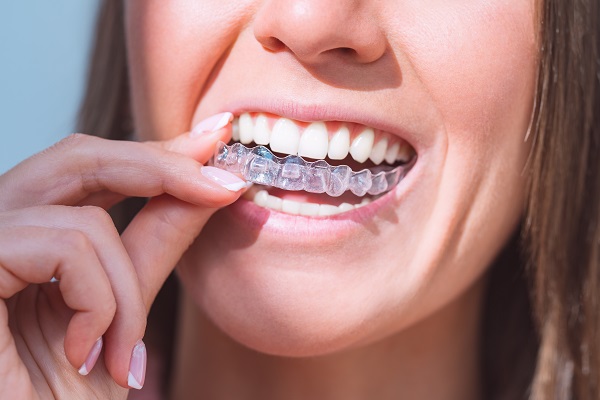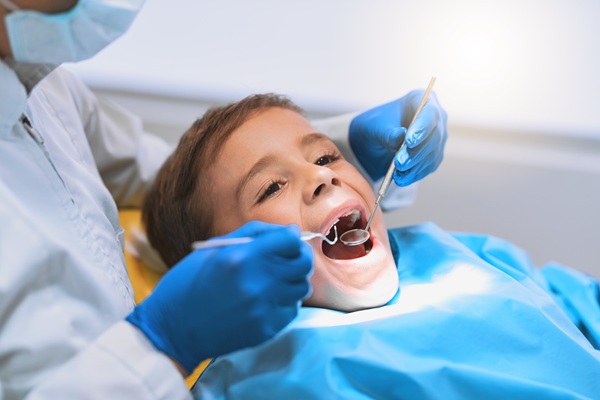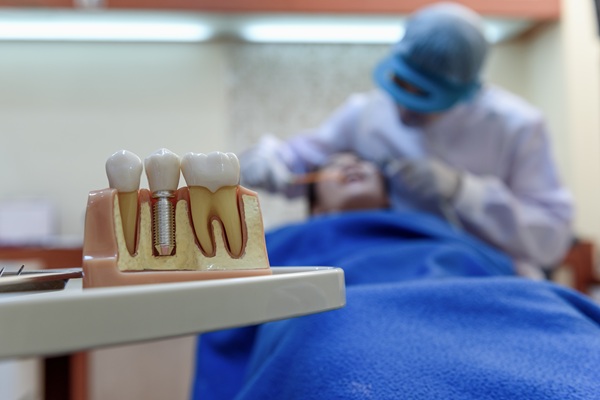Invisalign Treatment from a General Dentist for Alignment or Crowding Issues

Invisalign® is one of the most common treatments used to address teeth straightening problems. General dentists recommend Invisalign® quite frequently due to the many associated benefits and ease of the treatment process.
One thing to know about Invisalign® is that it cannot address all orthodontic issues. However, it is a great option for misalignments and crowding, both of which can be detrimental to one's oral health and self-confidence. Keep reading to find out what Invisalign® can do.
Treat crowding and misalignments with Invisalign®
The following review highlights what Invisalign® can do for those who have crowded teeth or alignment issues. This information may be helpful to those looking into their treatment options.
The problem with crowding and alignment issues
Crowding can be detrimental to one's oral health because it can create hard-to-reach spaces between teeth. These spaces become susceptible to left behind food. When food gets stuck in these spaces, the result can be bacterial growth because it may be hard for a toothbrush or floss to access. Over time, this bacteria turns into plaque, which leads to tartar. When tartar does not get removed, serious restorative care will be required.
Misalignments of the teeth or arch can also be problematic. One's bite may be affected, which can make eating difficult. Additionally, over time, a misaligned jaw can lead to extra wear on certain teeth. Decay, chronic pain, or a TMJ disorder may occur, all of which can lead to headaches and malfunction.
What Invisalign® can do
Invisalign® can straighten out crooked teeth; however, an extraction may be necessary first. If the reason for the crowding is that there are too many teeth, an extraction may be required. If crowding occurs due to crookedness then Invisalign® treatment can likely start right away. Once crowded teeth are straightened out and evenly aligned, there will be fewer hard-to-reach areas, if none at all. One's oral hygiene routine should be able to be improved, which will in turn help encourage better oral health.
As far as misalignments, Invisalign® is a good option for cases that do not involve a serious jaw issue. When the teeth are simply misaligned, the aligners can significantly improve how they sit in the arch. However, jaw misalignments may require serious orthodontic attention such as braces or headgear.
Ultimately, Invisalign® can improve the health of the teeth, which will also lead to healthier gums, a stronger jaw, and a better-looking smile. A better-looking smile will improve confidence and self-esteem!
Find out more from a general dentist
When needing Invisalign® treatment, the best thing to do is start by consulting with a general dentist. The consultation allows the dentist to evaluate the teeth to determine the timeline and other important factors, such as additions to treatment. Additionally, the general dentist can answer questions or go over any existing concerns. To learn more about Invisalign® and what is involved, reach out today. Additionally, we can get you scheduled for an appointment.
Request an appointment here: https://www.mycaredentals.com or call My Care Dental at (512) 590-6634 for an appointment in our Austin office.
Check out what others are saying about our dental services on Yelp: Invisalign in Austin, TX.
Recent Posts
Good oral health habits early in life are critical for a child's overall well-being. Pediatric dentists offer comprehensive care designed to meet the unique needs of children, such as higher tooth decay risk. This sets a strong foundation for a lifetime of healthy smiles. From their expertise in children's dental development to their kid-friendly approach,…
Dental implants are a great option for replacing missing teeth. They can last a lifetime and look and act like your natural teeth. However, many factors determine how many implants you need to replace multiple teeth. While having a dental implant placed in your mouth that looks and acts just like your natural teeth sounds…
A kid friendly dentist can do much more than performing a routine examination on your child’s teeth and gum. The dentist also provides important restorative care when your son or daughter has a large cavity. Tooth decay can be common among young patients. When this occurs, the child is at risk of losing the tooth.…
Visible cavities and broken teeth can detract from your smile and make you feel less confident, but tooth colored, or composite fillings can restore these problems in a way that makes the repairs difficult for others to see. In addition, these fillings have many other benefits, and learning about them before making a choice regarding…


